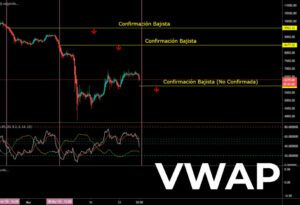
Table of Contents
ToggleAs you well know, every day new crypto concepts appear that you should know. The TVL is not a new concept, however, if you are interested in cryptocurrencies, it is a concept that you should be very clear about. That is why in this article we will tell you all about what TVL is and how it works.
TVL stands for Total Locked Value. This concept represents a metric used to determine the valuation amount of DeFi. This metric is used to measure precisely how much fiat money is being invested in decentralized applications. It is especially used in those projects that work mainly with smart contracts. Generally, this amount is usually expressed in US dollars (USD) on major sites that follow the model.
As you probably know, a decentralized application, or dApp, makes use of smart contracts to secure its operations. An example of this are decentralized exchanges or DEX. You can also find some dApps geared towards various types of lending, synthetic asset issuance and many other options. As a general rule, the vast majority of these smart contracts are developed on the “blockchain” and to access them we would have to use digital currencies or assets that are temporarily blocked.
How is the TVL created?
The first thing to keep in mind is that the amount of assets that are sent to and held in a smart contract have their own value. Such value measured in US dollars or USD, are the total locked value or TVL in Decentralized Finance. It should be noted that this value can also be expressed in cryptocurrencies which are generally either Bitcoin or Ethereum.
Currently, the amount that is already part of this group of financial applications is used as an indicator. This indicator provides information on the growth or decline of the system with respect to its monetary value.
To understand it better, let’s take an example; let’s imagine that a user has some capital and considers the idea of making loans in a secure way, i.e. without taking risks outside the terms of the loan. To this end, the user decides to use the AAVE protocol. AAVE is a project where the user can block funds, set interest and other users can access his capital by creating a debt.
To do this, the user uses a smart contract where he sends the assets he wants to put at stake to obtain a certain amount of interest. For everything to work according to the contract, the borrower must provide collateral that he will collect once he has repaid the total amount of the loan. In this way the lender secures his money in case the smart contract is not fulfilled. If this happens, the assets will be blocked from an insurance application and added to the index indicated.

What are temporarily blocked assets?
As we well know, we cannot use BTC on the Ethereum blockchain, however, we can block BTC from a smart contract developed on this network. An example of this system is the Wrapped Bitcoin dApp or WBTC. In it, a real balance of the main cryptocurrency is blocked and then the network issues a derivative currency that can be used in the DeFi system while keeping the price of BTC blocked. The blocked amount will be automatically added to what we call total blocked value or TVL.
Roughly speaking, this expression will always represent the total capital invested in an overall system. Most of this capital will be based, in this case, on the Ethereum (ETH) network. Over the years, other projects have been developed that also join this concept. These include Polygon (MATIC), Avalanche (AVAX), TRON (TRX), Solana (SOL), among others.
In these projects users have the ability to unlock their funds at any time. We must take into account that there are no established time limits to be within a certain system, according to its characteristics and rules. However, in some cases, the user is obliged to return the tokens corresponding to the blocked amount, whether it is measured in quantity or value. In the field of loans, some protocols do not have specific expiration periods, however, the user must maintain the agreed margin.
Another branch to which this concept is applied is synthetic assets. In some dApps we can block an amount of money in a given cryptocurrency and from this other assets are issued with which we can trade. If desired, the user can return the issued assets and recover their collateral.

Total locked value index or TVL
The value of all decentralized applications is expressed in total locked value or TVL. Each dApp measures its balance individually. In fact, you can find websites oriented to calculate this value.
There are several ways of looking at this indicator, although it is usually viewed in a general way. However, the total value blocked is also measured by sector, which includes the payment systems sector, lending sector, decentralized exchanges, payment systems and digital asset management. Each category has its own particular indicator. Another way to use this indicator is by blockchain.
A user can track the TLV in order to decipher the trend of the asset or project. In addition, this indicator will also help us to know how much liquidity a given dApp has.
It should be noted that certain companies are against the methodology that follows the calculation of the total blocked value due to the fact that there are numerous derivatives in this system. For this reason, many claim that the result may not be entirely accurate.
In summary, we can ensure that the TVL or total locked value, in the context of cryptocurrencies, is nothing more than the sum of all assets deposited in decentralized finance protocols or DeFi.



